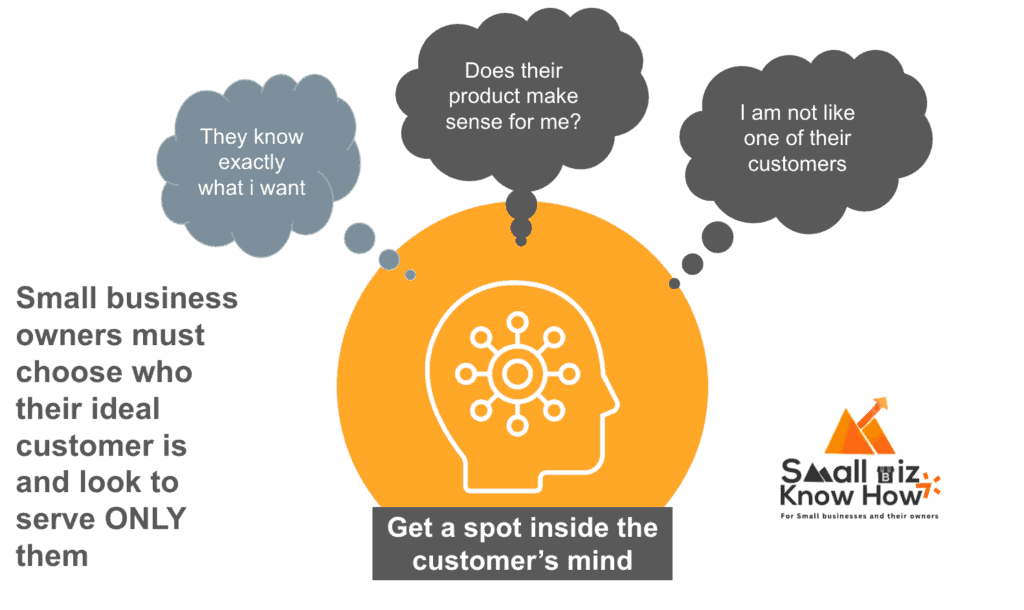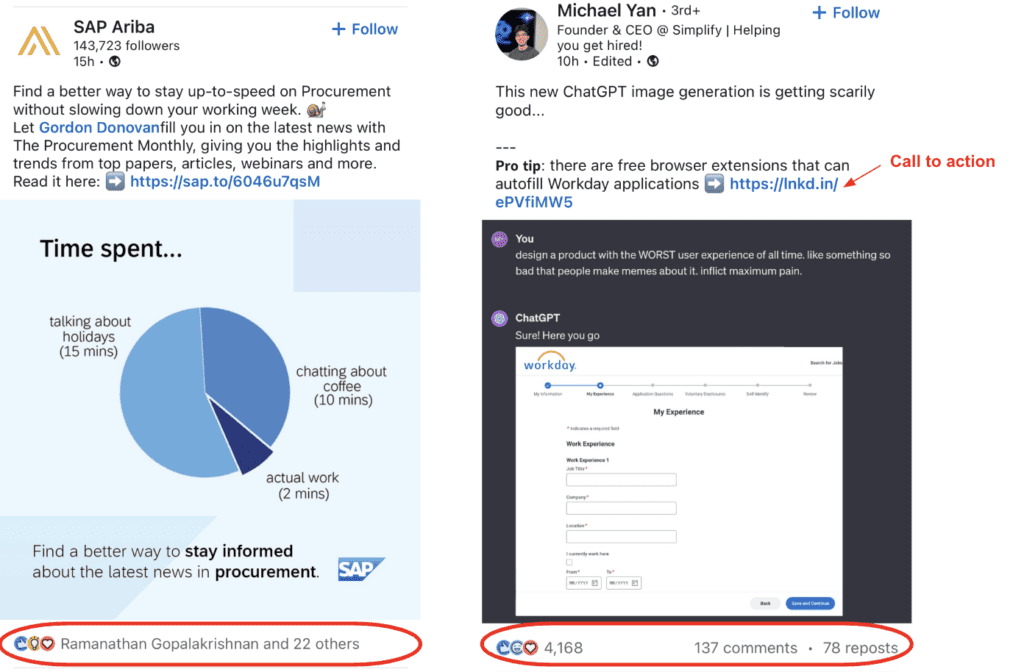In today’s digital age, the influence of social media on business growth and lead generation cannot be overstated.
As platforms evolve and user engagement increases, the potential for social media to not only connect people but also convert casual likes into actionable leads has become a cornerstone of effective digital marketing strategies.
But what exactly does it mean to generate leads from social media? And how do likes translate into a measurable increase in customer interest?
This article delves into these questions, providing a roadmap for businesses to harness the power of social media likes and transform them into leads.
By understanding the dynamics of social interactions and strategically targeting the right audience, companies can enhance their marketing efforts and see a tangible impact on their sales funnel.
The Power of Social Media in the Modern Marketplace

Social media stands as a pivotal platform in modern business strategies, primarily due to its unparalleled capability as a listening tool. It allows companies to tune into the real-time sentiments and needs of their customers, offering insights that go beyond traditional market research.
This constant stream of feedback is invaluable for businesses looking to stay responsive and relevant in a fast-paced market.
Moreover, social media provides a unique opportunity to craft and maintain a brand narrative over time. By engaging consistently and authentically with their audience, businesses can build a story that resonates and evolves with their customers, fostering loyalty and enhancing brand reputation.
This narrative-building capability is essential for long-term success in an environment where consumer preferences are continuously shifting.
Why I Love Social Media Marketing: Building Community on LinkedIn
I love social media marketing because it has empowered me to build a thriving community on LinkedIn, which has been crucial for my business. Through LinkedIn, I’ve been able to connect with like-minded professionals and industry peers, fostering discussions and sharing insights that are mutually beneficial.
This platform allowed me to establish a minimum viable audience—key individuals interested in my content and services, providing early and valuable feedback that shaped the direction of my offerings.
By nurturing this community, I’ve developed not just a customer base, but a network of advocates and collaborators, making my business more resilient and adaptable.
This approach to building a sustainable audience has proven not only effective but also deeply rewarding as it aligns with my passion for engaging directly with those who benefit from my work.
Understanding Social Media Dynamics of likes and shares

To understand the dynamics of likes and shares on social media, it’s crucial to consider a variety of engagement metrics that businesses can use to gauge audience interest and potential buying intent.
Here’s a table that outlines common social media engagement metrics, each assigned a weightage based on their relative importance in indicating a user’s intent to engage further or purchase.
| Engagement Metric | Description | Weightage |
|---|---|---|
| Likes | Simplest form of engagement, shows basic approval. | Low (1) |
| Shares | Indicates endorsement, spreading content to others. | High (3) |
| Comments | Deeper interaction, involves effort and thought. | Medium (2) |
| Clicks | User has taken action to learn more. | Medium (2) |
| Saves | User has saved content for later, indicating interest. | High (3) |
| Direct Messages | Direct engagement with the brand, high intent. | Very High (4) |
To use these metrics effectively, businesses should focus on those with higher weightages as indicators of strong intent to buy.
For example, a high number of saves and direct messages could signal that users are considering a purchase or want more information, making them prime leads.
By analyzing these patterns, businesses can better identify when a like or a share transitions into a potential lead, helping to tailor their content and interactions to nurture these leads further into the sales funnel.
From Casual Likes to Committed Leads

Turning simple social media interactions into sales opportunities requires a well-planned strategy that begins with understanding and mapping user engagement.
Below is an example of how a simple social media campaign can transition into a lead-generating campaign using a structured approach based on engagement metrics.
Example Social Media Campaign: Product Launch Teaser
- Engagement Phase
- Objective: Generate awareness and interest through teasers and previews.
- Key Metrics: Likes, shares, comments.
- Outcome: High engagement signals strong initial interest.
- Interest Phase
- Objective: Nurture interest by providing more detailed information, testimonials, and user-generated content.
- Key Metrics: Clicks, saves, direct messages.
- Outcome: Deeper engagement indicates a desire for more information, moving towards potential buying interest.
- Conversion Phase
- Objective: Convert interested users into leads with calls to action like sign-ups, pre-orders, or exclusive access.
- Key Metrics: Form submissions, sign-ups, direct inquiries.
- Outcome: High conversion activities demonstrate clear intent to purchase or engage further.
Table 1: Engagement Metrics and Their Implications
| Engagement Type | Indicative Metric | Business Implication |
|---|---|---|
| General Interest | Likes, Shares | Identify content’s appeal and potential reach. |
| Considered Interest | Comments, Clicks | Evaluate depth of interest and topics of concern. |
| Potential to Convert | Saves, Direct Messages | Recognize users with higher buying intent. |
Table 2: Transition from Engagement to Leads
| Engagement Type | Conversion Strategy | Lead Generation Potential |
|---|---|---|
| Casual Engagement | Targeted ads based on interaction | Low to Medium |
| Active Engagement | Personalized follow-ups, offers | Medium to High |
| Direct Interaction | Direct contact, special discounts | Very High |
Strategies to Amplify Lead Generation
- Content Personalization: Tailor content to meet the specific interests and behaviors shown by your audience segments. Utilize data from previous interactions to customize messages.
- Retargeting Campaigns: Use retargeting tools to show ads to users who have engaged with your content but did not convert. Tailor the ads based on the specific interactions they had with your content.
- Engagement Driven Offers: Provide incentives that are triggered by certain levels of engagement, such as discounts or special content for users who save posts or engage with them multiple times.
- Lead Qualification via Direct Engagement: Implement systems to promptly respond to direct messages or comments, using these interactions as opportunities to qualify leads and understand their specific needs.
By systematically advancing users through these phases, from initial casual likes to more committed leads, businesses can effectively harness social media’s power to not just engage with their audience but convert them into valuable customers.
Each step of engagement can be nurtured and optimized with specific strategies, ensuring that every like or share has the potential to contribute towards tangible business outcomes.
Targeting and Engaging the Right Audience
When leveraging social media to target and engage the right audience, businesses must use data-driven approaches and enhance engagement by understanding customer psychology and preferences. Let’s explore how this can be effectively achieved through a detailed, hypothetical example.
Example of a Campaign: Launch of Eco-Friendly Coffee Cups
Objective: To market eco-friendly coffee cups to environmentally conscious consumers aged 25-40 who frequently purchase online.
Data-Driven Targeting
- Audience Segmentation:
- Demographic Data: Use social media insights to identify users aged 25-40.
- Interests: Target users who follow eco-friendly pages or have shown interest in sustainability topics through their likes and shares.
- Behavioral Analysis:
- Engagement Patterns: Analyze when these users are most active on social media platforms to optimize post timings.
- Purchasing Behavior: Use data from previous campaigns targeting similar demographics to understand what motivates their purchasing decisions, such as discounts or sustainability certifications.
- Psychographic Segmentation:
- Values and Beliefs: Develop content that resonates with the audience’s values of environmental conservation, using emotional appeals and highlighting the impact of their purchase.
- Custom Audiences and Lookalikes:
- Custom Audiences: Create custom audiences in ad platforms using email lists from previous eco-friendly product buyers.
- Lookalike Audiences: Expand reach by targeting new users similar to the best-performing segments of the current audience.
- A/B Testing:
- Content Variants: Test different ad creatives and messaging (e.g., emphasizing product durability vs. environmental impact) to determine which resonates more with the target audience.
Engagement Enhancement Tips
- Content Strategy:
- Educational Content: Post content that educates the audience about the environmental impact of traditional coffee cups compared to eco-friendly alternatives.
- User-Generated Content: Encourage users to share their experiences and photos using the product, creating a community feeling.
- Interactive Elements:
- Polls and Quizzes: Create interactive quizzes about sustainability to engage users and subtly educate them about the product’s benefits.
- Live Sessions: Host live sessions with environmental experts or influencers to discuss sustainability and the product.
- Personalized Messaging:
- Direct Interaction: Use social media tools to send personalized messages thanking users for their interest or offering them a first-time purchase coupon.
- Segmented Posts: Tailor posts to different segments, such as highlighting the product’s durability for outdoor enthusiasts.
- Rewarding Engagement:
- Loyalty Rewards: Introduce a loyalty program for repeat purchases or referrals, exclusive to social media followers.
- Contests: Run a contest where participants share a post about how they’ve incorporated eco-friendly practices, with winners getting free products.
- Feedback Loops:
- Surveys: Conduct short surveys asking followers what they want to see more of regarding content, products, or sustainability practices.
- Comment Engagement: Actively respond to comments and messages, showing that the brand values customer input and is responsive.
By integrating these targeted strategies and engagement tactics, businesses can not only reach the right audience but also deeply connect with them, turning casual interest into committed customer relationships.
This approach ensures that social media efforts contribute significantly to the overall marketing goals, adapting dynamically to user feedback and evolving preferences.
Social Media campaign Like to Leads Measurement Template
A campaign manager can use a structured template that tracks key performance indicators (KPIs) across different phases of the campaign. Here’s a template that could be used to organize and measure the success of the campaign:
| Campaign Phase | KPI | Metric | Target | Actual | Tools/Software | Notes |
|---|---|---|---|---|---|---|
| Audience Engagement | Likes, Shares | Total Number, Growth | 1000 Likes | 1200 Likes | Social Media Analytics | Initial engagement exceeded target |
| Comments | Total Number | 200 Comments | 180 Comments | Social Media Analytics | Slightly below target | |
| Conversion to Leads | Click-through Rate (CTR) | Percentage | 5% CTR | 6% CTR | Ad Manager, Google Analytics | Better than expected |
| Lead Generation | Number of Leads | 100 Leads | 90 Leads | CRM, Web Forms | Below target, adjust ad content | |
| Final Conversions | Sales Conversion Rate | Percentage | 3% | 3.5% | Sales Data, CRM | Above target, successful upselling |
| Customer Interaction | Direct Messages | Number | 50 Messages | 75 Messages | Social Media Platforms | High engagement, potential for loyalty |
| Feedback Collection | Survey Responses | Number | 200 Surveys | 150 Surveys | Survey Tools | Consider incentives for participation |
This template allows a campaign manager to track specific goals against actual outcomes, adjust strategies in real time, and understand which elements of the campaign are performing well or need improvement.
Each metric is chosen to reflect a crucial aspect of the campaign’s success, from initial engagement to final sales conversions.
Tools and software columns are included to specify which technologies will be used to gather and analyze data, ensuring that all measurements are accurate and actionable.
Integrating Social Media Tactics into Your Sales Funnel

To effectively integrate social media tactics into a sales funnel, it’s essential to identify potential touchpoints where social media can influence buyer decisions.
Below is a template highlighting these integration points within a sales funnel, using the eco-friendly coffee cup campaign as an example.
Sales Funnel Integration Template for Social Media
| Sales Funnel Stage | Social Media Integration Point | Objective | Tactics |
|---|---|---|---|
| Awareness | Targeted Ads, Organic Posts | Introduce product and brand to new audience | Use visually appealing ads and informational posts about sustainability |
| Interest | Engagement Posts, Stories | Deepen interest and educate potential customers | Share user testimonials, product benefits, and engage through polls/quizzes |
| Consideration | Direct Messaging, Custom Audiences | Address specific queries and barriers to purchase | Use retargeted ads for users who engaged but didn’t convert, personalized messages |
| Intent | Promotions, Live Demos | Nudge towards purchase | Offer limited-time discounts, showcase product uses in live demos |
| Purchase | Seamless Shopping Experience | Facilitate easy purchase process | Integrate shopping features on social media, quick checkout links |
| Loyalty | Follow-up and Community Building | Encourage repeat purchases and referrals | Offer loyalty bonuses, exclusive content for followers, engage in community discussions |
Example: Eco-Friendly Coffee Cup Campaign
Awareness: Launch a series of Facebook and Instagram ads that highlight the environmental impact of disposable cups, introducing the eco-friendly coffee cup.
Interest: Share posts and stories on Instagram showing the manufacturing process of the cups, their sustainability certificates, and testimonials from users who are committed to eco-friendly products.
Consideration: Use Facebook’s direct messaging feature to answer any inquiries from potential customers who have shown interest but have concerns about the product’s durability or price.
Intent: Host a live session on Instagram demonstrating the various uses of the coffee cup, followed by a limited-time promo code for viewers to purchase at a discount.
Purchase: Enable Instagram’s shopping feature, allowing users to purchase directly from posts and stories, ensuring a smooth transition from interest to purchase.
Loyalty: After purchase, engage customers on Twitter and Facebook, encouraging them to share their experiences and offer a referral discount for future purchases.
By mapping out each stage of the sales funnel and identifying how social media can enhance the buyer’s journey, businesses can create a more cohesive and effective sales strategy that leverages the unique strengths of social media platforms.
